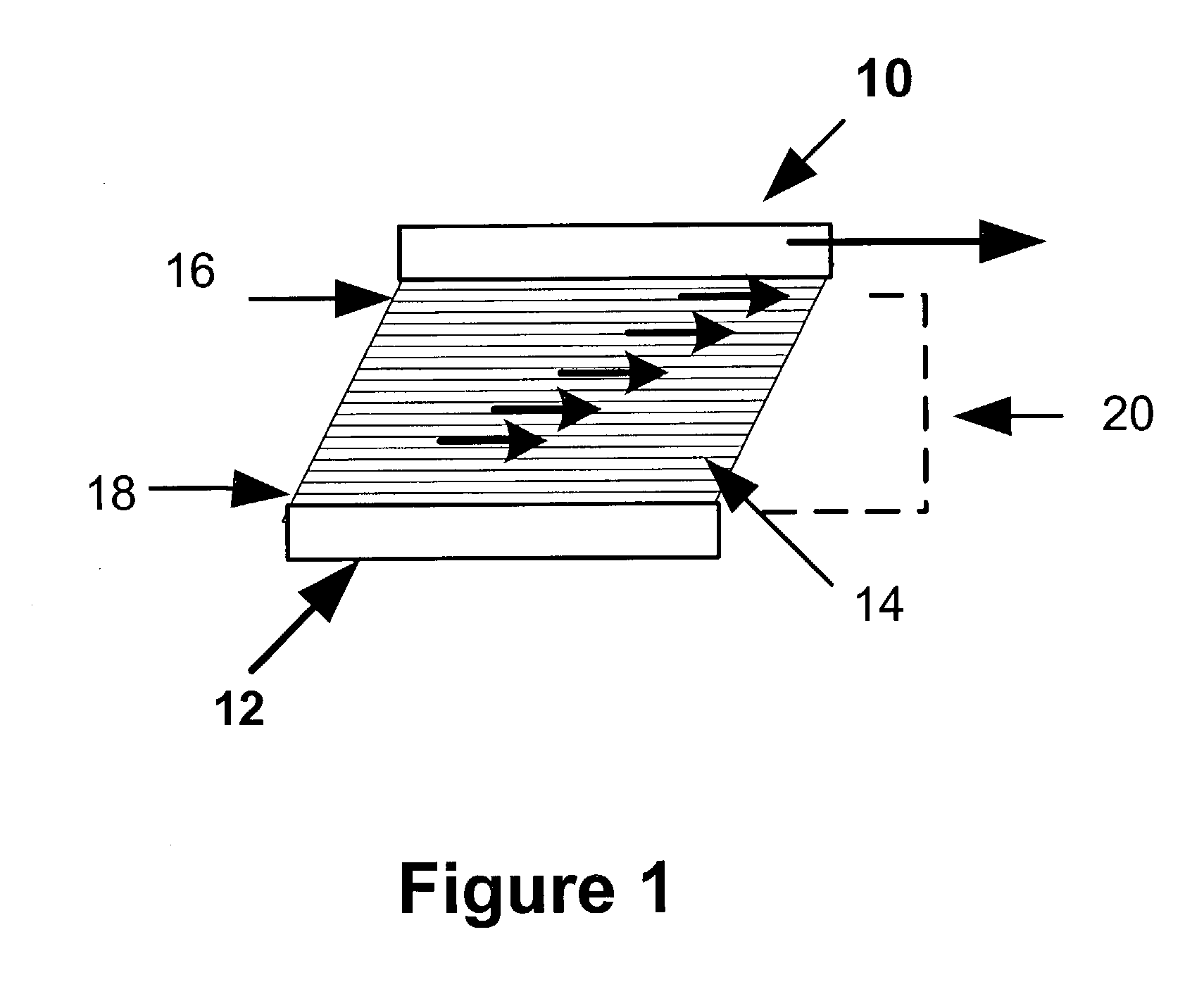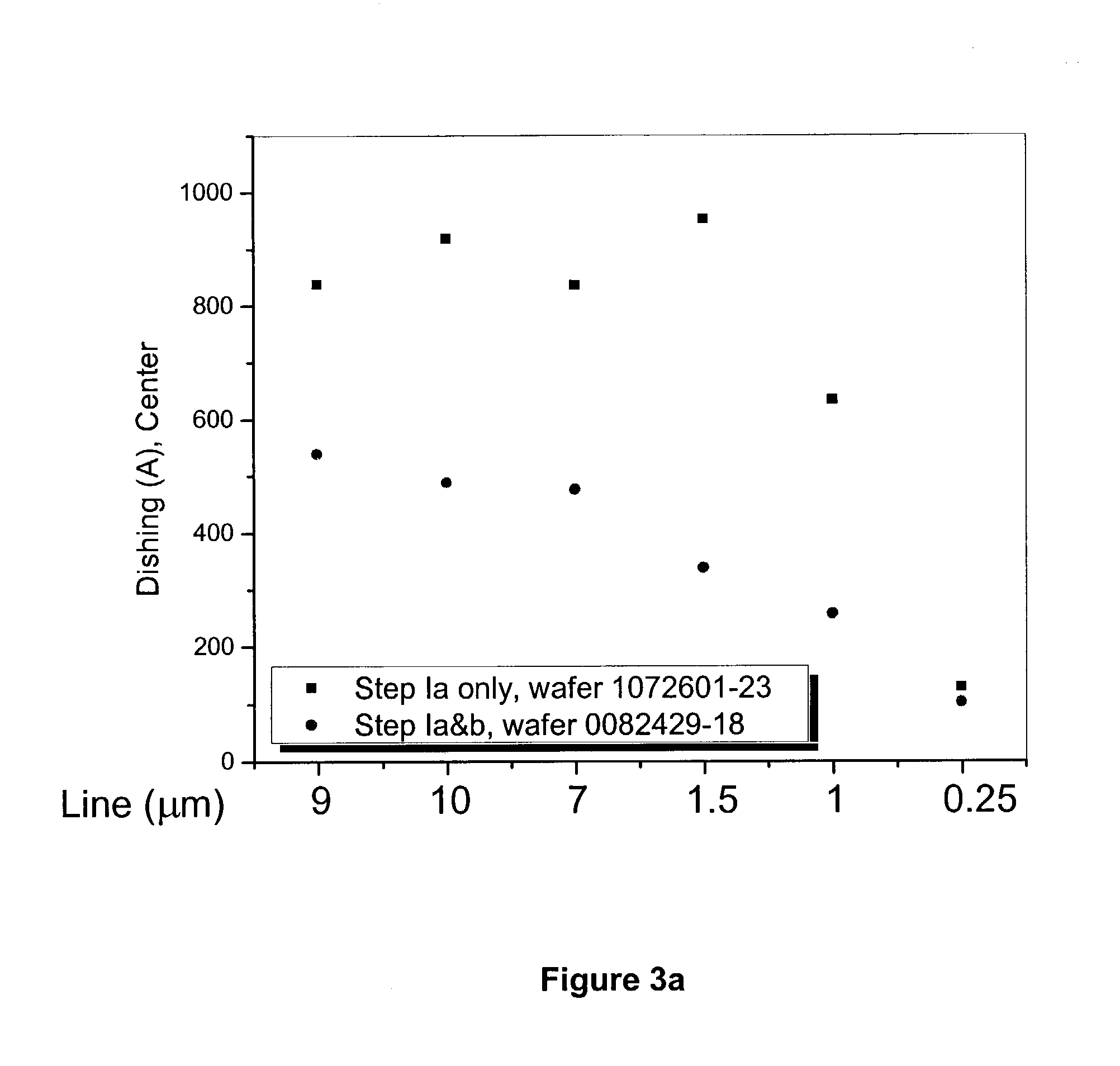Chemical mechanical polishing compositions for copper and associated materials and method of using same
- Summary
- Abstract
- Description
- Claims
- Application Information
AI Technical Summary
Benefits of technology
Problems solved by technology
Method used
Image
Examples
example 1
[0082] In one experiment 0.1% hydroxypropylcellulose with 1,000,000 MW was combined with:
[0083] 4% glycine;
[0084] 0.8% amino-tetrazole;
[0085] 5% hydrogen peroxide; and
[0086] 1% Nyacol DP6243 alumina coated silica composite abrasive.
[0087] The copper polish rate remained the same as without the addition of the rheology agent at approximately 4000 .ANG. / min. However, tantalum (liner) polishing rate decreased from 40 .ANG. / min to 30 .ANG. / min, increasing selectivity from 100:1 to 133:1.
example 2
[0088] In a second experiment, the copper line dishing was compared between a one step copper polish using only the composition shown below under Step 1(a) and a two step (a&b) copper polish using the composition shown below under Step 1(a) and Step 1(b).
[0089] Step 1(a) Formulation
[0090] 4% glycine;
[0091] 0.8% amino-tetrazole;
[0092] 5% hydrogen peroxide; and
[0093] 1% alumina coated silica composite abrasive.
[0094] Step 1(b) Formulation
[0095] 4% glycine;
[0096] 0.8% amino-tetrazole;
[0097] 0.4% hydrogen peroxide;
[0098] 1% alumina coated silica composite abrasive.
[0099] 0.1% hydroxypropylcellulose with 1,000,000 MW;
[0100] FIGS. 3a through 3c compare dishing data of a Step 1(a&b) CMP process (circles) relative to a Step 1(a) only process (squares) for different line widths (isolated lines). A decrease in the concentration of the oxidizing agent prior to liner exposure reduces dishing effects by more than 500 .ANG. (see 1.5 .mu.m line width). The data is taken for different die on the wa...
example 3
[0101] FIG. 4 shows electrical resistivity data for different overpolishing times for 100 .mu.m lines. As the overpolishing time increases, so too does line dishing, which results in a decreasing of the cross section of the line. A decrease in the area of the cross section increases the electrical resistivity of the line. The relative increase in the line resistivity stays small in comparison to the line resistivity even for long overpolishing times. Thus a robust process is achieved by utilizing the described step 1a and 1b slurry to remove the Cu overburden and planarize the wafer surface.
PUM
| Property | Measurement | Unit |
|---|---|---|
| Power | aaaaa | aaaaa |
| Kinematic viscosity | aaaaa | aaaaa |
| Fraction | aaaaa | aaaaa |
Abstract
Description
Claims
Application Information
 Login to View More
Login to View More - R&D
- Intellectual Property
- Life Sciences
- Materials
- Tech Scout
- Unparalleled Data Quality
- Higher Quality Content
- 60% Fewer Hallucinations
Browse by: Latest US Patents, China's latest patents, Technical Efficacy Thesaurus, Application Domain, Technology Topic, Popular Technical Reports.
© 2025 PatSnap. All rights reserved.Legal|Privacy policy|Modern Slavery Act Transparency Statement|Sitemap|About US| Contact US: help@patsnap.com



